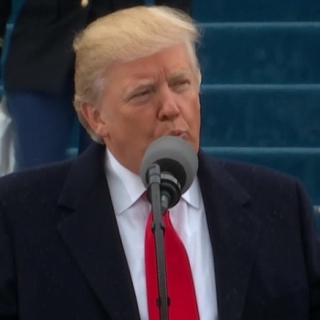


Industry executives are warning that U.S. President Donald Trump's recent 50% tariffs on aluminum imports may be too much for consumers to swallow and could destroy demand.
"We're concerned about the potential demand destruction" of the levies, especially at current levels, Derek Prichett, senior vice president of global metals at Novelis Inc., said at the 17th Harbor Aluminum summit in Chicago.
"Overall, it's a drag," Prichett said, adding that his company's Canadian-U.S. operations have been particularly affected by the tariffs. The Atlanta, Georgia-based company is the largest maker of flat-rolled aluminum products used in a variety of industries, including automotive and aerospace.
Trump has said the tariffs are necessary to protect domestic producers' profit margins and spur investment in U.S. manufacturing. But the U.S. is heavily dependent on imports to make everything from beverage cans to cars and airplanes.
Read More: Trump Signs Order Doubling U.S. Steel, Aluminum Tariffs to 50%
Many executives say manufacturers may not be able to absorb the high level of levies, which Trump doubled from 25% earlier this year. The levies, they say, will make products more expensive for Americans. Hisham Alkooheji, chief marketing officer at Aluminum Bahrain BSC, called the 50% tariffs — which take effect June 4 — a "real tipping point" because it will be difficult to pass on the cost to consumers.
Trump's aggressive and ever-changing tariff moves have also led to increased volatility in the metals market. After Trump's tariff doubling announcement Friday, contracts tied to the price producers pay to ship aluminum to the Midwest jumped 54% to their highest since 2013 on the Comex in New York on Monday and were trading near that level on Wednesday. (alg)
Source: Bloomberg
Japan's annual inflation rate edged down to 2.9% in November 2025 from October's 3-month high of 3.0%. Core inflation stood at 3.0%, keeping the same pace as in October and aligning with estimates. Mo...
Goldman Sachs sees gold prices climbing 14% to $4,900 per ounce by December 2026 in its base case, it said in a note on Thursday, while citing upside risks to this view due to a potential broadening o...
The BRICS group of countries is increasingly being considered as an alternative for global diplomacy and cooperation amidst increasing tariff and protectionist policies from the United States. A numbe...
Applications for US unemployment benefits fell after a spike in the previous week, underscoring the choppy nature of the data at this time of year. Initial claims decreased by 13,000 to 224,000 ...
Annual inflation in the United States (US), as measured by the change in the Consumer Price Index (CPI), fell 2.7% in November, according to a report by the US Bureau of Labor Statistics (BLS) on Thur...
Oil prices fell on Friday (December 19th) and are expected to post a second straight weekly decline as potential oversupply and the prospect of a Russia-Ukraine peace deal outweigh concerns over disruptions caused by a Venezuelan oil tanker...
Silver prices rose on Friday (December 19) and remained near their all-time highs, driven by strong investor interest in safe-haven assets. The weakening US dollar and expectations of lower global interest rates have made silver increasingly...
The Hang Seng Index rose 192 points, or 0.75%, to end at 25,690 on Friday, extending its gains for a third session as all major sectors advanced. Sentiment was boosted by continued gains in mainland China's stock market amid reports that ByteDance...
 Fed Governor Christopher Waller said Wednesday that the Fed is in no rush to cut interest rates, given the current outlook, according to...
Fed Governor Christopher Waller said Wednesday that the Fed is in no rush to cut interest rates, given the current outlook, according to...
 Stocks fell slightly on Tuesday as traders digested the delayed release of the November's jobs report.
The S&P 500 fell 0.1%, while the Nasdaq...
Stocks fell slightly on Tuesday as traders digested the delayed release of the November's jobs report.
The S&P 500 fell 0.1%, while the Nasdaq...
 Nonfarm Payrolls (NFP) in the United States rose by 64,000 in November, according to a report from the U.S. Bureau of Labor Statistics (BLS) on...
Nonfarm Payrolls (NFP) in the United States rose by 64,000 in November, according to a report from the U.S. Bureau of Labor Statistics (BLS) on...
 European stocks closed lower on Tuesday, with the STOXX 50 down 0.5% and the broader STOXX 600 slipping 0.4%, as optimism around Russia–Ukraine...
European stocks closed lower on Tuesday, with the STOXX 50 down 0.5% and the broader STOXX 600 slipping 0.4%, as optimism around Russia–Ukraine...